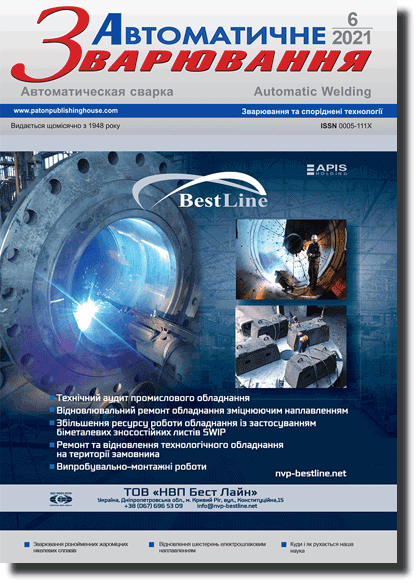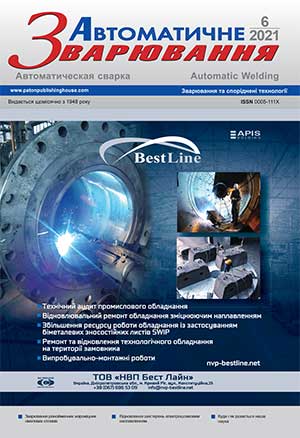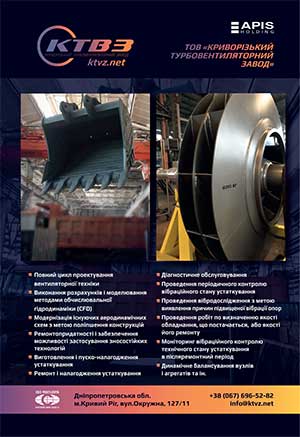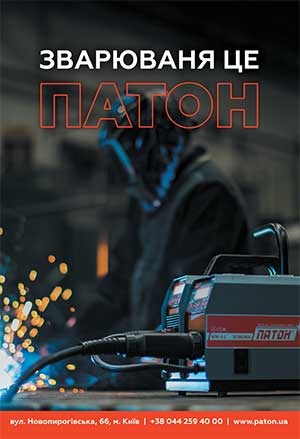| 2021 №06 (04) |
DOI of Article 10.37434/as2021.06.05 |
2021 №06 (06) |
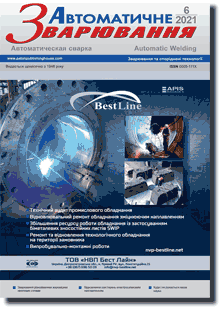
"Avtomatychne Zvaryuvannya" (Automatic Welding), #6, 2021, pp. 35-38
Investigation of presence of Mn+4 in welding aerosols
O.M. Korduban1, V.V. Trachevskiiy2, T.V. Kryschuk1, I.R. Javdoschin3, V.V. Holovko3
11V.I. Vernadsky Institute of General and Inorganic Chemistry of the NAS of Ukraine. 33/34 Palladin Ave., 03142, Kyiv, Ukraine
2Technical Center of the NAS of Ukraine. 13, Pokrovska Str., 04070, Kyiv, Ukraine
3E.O. Paton Electric Welding Institute. 11 Kazymyr Malevych Str., 03150 Kyiv, Ukraine. E-mail: office@paton.kiev.ua
Toxicity of welding aerosol signifi cantly aff ects the choice of the type of electrodes for arc welding. Modern research methods allow determining the content of divalent and trivalent manganese particles in the solid component of welding aerosol. The studies were carried out to determine the ability of detecting the presence of ions of the most toxic tetravalent manganese in the solid component of welding aerosol. The possibility of using the method of RFS analysis for fi xing manganese ions in the Mn4 + state in welding aerosols is shown. 9 Ref., 3 Tabl., 2 Fig.
Keywords: welding, electrodes, aerosol, toxicity, manganese, X-ray fl uorescence spectra
Received: 15.03.2021
References
1. Pokhodnya, I.K., Gorpenyuk, V.N., Milichenko, S.S. et al. (1990) Metallurgy of arc welding. Processes in arc and melting of electrodes. Ed. by I.K. Pokhodnya. Kiev, Naukova Dumka [in Russian].2. Grishagin, V.M. (2011) Welding aerosol: Formation, examination, localization, application. Tomsk, TPU [in Russian].
3. Qiang, Zhen, Ruifang, Chen, Kai, Van, Rong, Li (2007) Synthesis of ZrO2-HfO2-Y2O3-Sc2O3 Nano-Particles by Sol-Gel Technique in Aqueous Solution of Alcohol. J. of Rare Earths, 25, 2, 199-203. https://doi.org/10.1016/S1002-0721(07)60073-8
4. Briggs, D., Seach, M.P. (1983) Practical surface analysis by Auger and X-ray photoelectron spectroscopy, John Wiley & Sons, Chichester - New York.
5. Diagne, C., Idriss, H., Pearson, K.et al. (2004) Effi cient hydrogen production by ethanol reforming over Rh catalysts. Eff ect of addition of Zr on CeO2 for the oxidation of CO to CO2. Comptes Rendus Chimie, 7, 6, 617-622. https://doi.org/10.1016/j.crci.2004.03.004
6. Foschini, C.R., Souza, D.P.F., Paulin Filho, P.I., Varela, J.A. (2001) AC impedance study of Ni, Fe, Cu, Mn doped ceria stabilized zirconia ceramics. J. Eur. Cer. Soc., 21, 9: 1143-1149. https://doi.org/10.1016/S0955-2219(00)00339-3
7. Yanmei, Kan, Guojun, Zhang, Peiling, Wang et al. (2006) Yb2O3 and Y2O3 co-doped zirconia ceramics. Ibid, 26, 16, 3607-3612. https://doi.org/10.1016/j.jeurceramsoc.2006.01.007
8. Markaryan, G.L., Ikryannikova, L.N., Muravieva, G.P. et. al. (1999) Red-ox properties and phase composition of CeO2-ZrO2 and Y2O3-CeO2-ZrO2 solid solutions. Colloids and Surfaces A: Physicochemical and Engineering Aspects, 151, 3, 435. https://doi.org/10.1016/S0927-7757(98)00574-3
9. Marrero-López, D., Peña-Martínez, J., Ruiz-Morales, J.C. et al. (2008) Phase stability and ionic conductivity in substituted La2W2O9. Bol. Soc. Esp. Ceram. V., 47, 4, 213-218. https://doi.org/10.1002/chin.200825010
Advertising in this issue:
The cost of subscription/purchase order journals or individual articles
| Journal/Currency | Annual Set | 1 issue printed |
1 issue |
one article |
| TPWJ/USD | 384 $ | 32 $ | 26 $ | 13 $ |
| TPWJ/EUR | 348 € | 29 € | 24 € | 12 € |
| TPWJ/UAH | 7200 UAH | 600 UAH | 600 UAH | 280 UAH |
| AS/UAH | 1800 UAH | 300 UAH | 300 UAH | 150 UAH |
| AS/USD | 192 $ | 32 $ | 26 $ | 13 $ |
| AS/EUR | 180 € | 30 € | 25 € | 12 € |
| SEM/UAH | 1200 UAH | 300 UAH | 300 UAH | 150 UAH |
| SEM/USD | 128 $ | 32 $ | 26 $ | 13 $ |
| SEM/EUR | 120 € | 30 € | 25 € | 12 € |
| TDNK/UAH | 1200 UAH | 300 UAH | 300 UAH | 150 UAH |
| TDNK/USD | 128 $ | 32 $ | 26 $ | 13 $ |
| TDNK/EUR | 120 € | 30 € | 25 € | 15 € |
AS = «Automatic Welding» - 6 issues per year;
TPWJ = «PATON WELDING JOURNAL» - 12 issues per year;
SEM = «Electrometallurgy Today» - 4 issues per year;
TDNK = «Technical Diagnostics and Non-Destructive Testing» - 4 issues per year.





